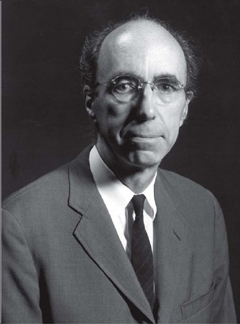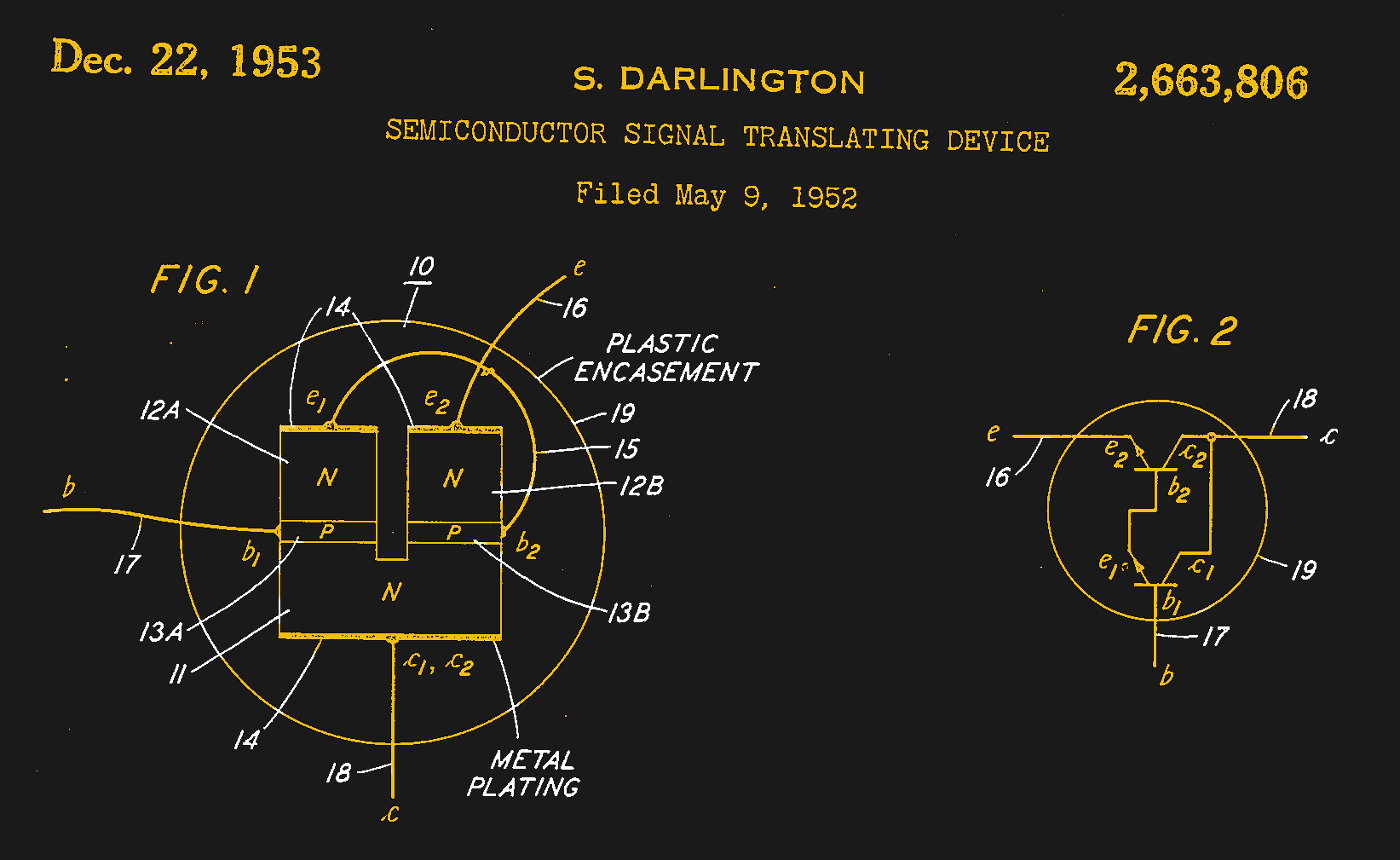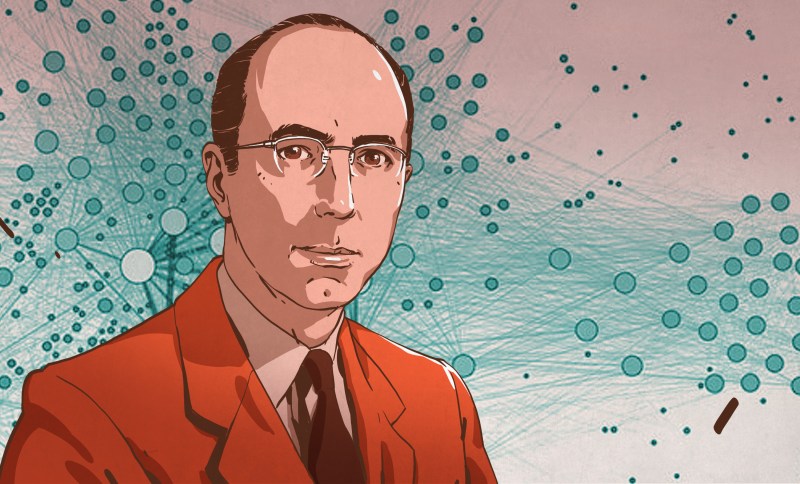In a field where components and systems are often known by sterile strings of characters that manufacturers assign or by cutesy names that are clearly products of the marketing department and their focus groups, having your name attached to an innovation is rare. Rarer still is the case where the mere mention of an otherwise obscure inventor’s name brings up a complete schematic in the listener’s mind.
Given how rarely such an honor is bestowed, we’d be forgiven to think that Sidney Darlington’s only contribution to electronics is the paired transistor he invented in the 1950s that bears his name to this day. His long career yielded so much more, from network synthesis theory to rocket guidance systems that would eventually take us to the Moon. The irony is that the Darlington pair that made his name known to generations of engineers and hobbyists was almost an afterthought, developed after a weekend of tinkering.
A Passion for Networks
With her background as a teacher in a one-room schoolhouse on the edge of the American prairie, Sidney Darlington’s mother was determined that her children would have the best educations possible. His father, a mechanical engineer, was likely an influence on Sidney and his brother Philip, both of whom embarked on scientific careers. Philip chose biology while Sidney chose physics, which he studied at Harvard. After graduating in 1928, he earned a second B.S. in electrical engineering the following year from MIT.

Having been instilled with a passion for circuit analysis by his professors, in 1929 Sidney went to work at Bell Laboratories, then the center of the electrical engineering universe. He quickly found his way to the lab’s Mathematics Research Center, where his interest in circuit analysis would prove key to designing the complex filter networks needed to support the nascent technology of multiplexing, which can be used to stuff multiple telephone signals through one cable.
At the time, filter design was largely a trial and error affair where different filtering stages were connected together to achieve the desired result. This was inefficient from a design standpoint, and the filters often ended up not behaving quite as intended due to loading introduced by the various stages. Darlington’s method of filter design, known as network synthesis, took these impedances into account from the start, resulting in better filters and better networks.
Having already established a name for himself as well as a legacy, and with World War II in the offing, Darlington turned his work toward military needs. His theoretical bent and gift for mathematics made the problems involved with putting munitions on target an interesting one, and Darlington ended up making significant contributions to both bombsight designs and fire control systems for artillery. Near the end of the war he took a leave of absence from Bell to join the 14th Antiaircraft Command in the South Pacific as a civilian advisor.
More Than The Sum
With the conclusion of the war and the ensuing rush to switch basic research from military goals to commercial targets, Bell Labs swung into high gear, and Darlington played no small part in the activity. The invention of the transistor in 1947 by colleagues William Shockley, John Bardeen, and Walter Brattain piqued Darlington’s passion for circuit theory. By the early 1950s, the transistor had been transformed from physics lab oddity to an engineered commercial product, and Darlington grabbed a few to play with on his way home one day. The silicon transistors the Bell Labs had were relatively low-gain units, and Darlington was keen to find ways to increase the gain.

He breadboarded a few circuits before hitting on a paired topology – common collectors with the emitter of the first transistor tied to the base of the second. He reasoned that the pair would behave like a single transistor but with more current gain. He thought the gain would double, turning a pair of transistors with a gain of five into a single device with a gain of ten. He was surprised to learn that the gains multiplied, giving a gain of 25.
Knowing that he had a major innovation on his hands, he worked up the device back in the lab, characterizing the properties of compound transistors. He tried different circuits, some with common emitters rather than common collectors, and some with three transistors ganged together. But the common collector pair of NPN transistors was the most promising. Apart from the huge gain increase, the common collector arrangement naturally favored a simple fabrication method, where the two transistors could be built on a single slab of N-type silicon. Such an arrangement is described in Darlington’s 1953 patent application, and is one of the first suggestions that complex circuits could be built up monolithically on a single substrate.

Darlington would enjoy another two decades at Bell Labs, retiring in 1971. In that time he would also invent a guidance system for rockets that would find its way into the Titan I and Thor-Delta boosters, helping to usher in the Space Age. He also turned his signal processing prowess to radar, inventing a pulse compression or “chirp” radar system that became critical in the development of anti-ballistic-missile radar systems.
For as rich and inventive a life as Sidney Darlington lived, it seems fitting that we remember him today mainly for something he just whipped up at the bench one weekend. Much like any of us, he just wanted to press the limits of a new technology, and he was one of the lucky ones that found something so simple and so useful that his name lives on.
















Thanks!
Thanks!
5*Thanks + 5*Thanks = 25Thanks
5^2
Wonderful. Thank you!
One of the things that I love most about the folks at HaD is your passion for those who are/were passionate about making/inventing things, and the editors’ commitment to shining light on those who were the pioneers and explorers of the ‘brave new world’ that we now live in. Bravo, everyone!
Thanks, nice to hear. I absolutely love doing these profile pieces. These were men and women just doing what they loved, and some of them were lucky enough to have it pay off.
If you’ve got anyone you’d like profiled, drop us a line at tips@hackaday.com and we’ll see what happens.
That’s complete BS
Thanks to FPGAs (and ready made FPGA dev boards with anything you can imagine for “cost of a textbook) you can design your own CPU architecture and run actual programs on it (want your own compiler as well? grab some OSS project as a start a here you go)
Thanks to SDR boards and modules, anybody can tinker with RF up to multiple GHz, complex modulations, anything you can imagine.
Back than, they have transistors which was awfully expensive – now everything is available. I remember when i was starting electronics as hobby, there was transition through hole components was dying – SMDs as the only replacement – i though “well, it is over, this can’t be done in a garage”. Than ready made modules came and now? Now it is nearly paradise – you can go to aliexpress and other Chinese outlets and grab what you want, for couple of bucks – just one or two weeks wait. Thanks to internet, all information is out there, datasheets, examples, projects of other people (i still remember using 74xx catalog sold as a book).
Want real hardcore? Go high speed or high frequency – or both.
I think your sarcasm discriminator needs a phase adjustment.
+1
Patents last for 20 year from the time of application, so all those patents in the 50’s and 60’s have expired since the 80’s and provide good details of what was done. So you can now stand on their shoulders.
Where I would have an issue is software patents and DNA patents, but I would have no issue with the patents from the 50’s and 60’s. Oh and the patent trolls.
And music and movie licensing too.
Why is happy birthday not in the public domain but the design for transistors is ?
Media and genetics patents and copyright is pants on head retarded.
That’s why.
Last year, I think, a judge decided that Happy Birthday was not private intellectual property any more. So if it’s your birthday, feel free to post a YouTube video of your friends singing it to you. B-)
I certainly don’t want to underestimate Darlington’s contribution, but how can a combination of two transistors be called an invention?
Discovery may be better…but like the article says it was one of the first examples of complex monolithic construction.
If transistors had been around for several years at that time and nobody had used ’em that way yet, it was certainly not as obvious to them as it is to us. I don’t believe tubes were ever used in such structures, so it’s not like there was prior art to use as inspiration.
Transistors were expensive, and using two expensive components where the circuit only called for one, would probably have seemed frivolous or foolhardy! Except, that one transistor didn’t exist — nobody had high-gain perfected yet. So the circuits got more complex instead, and gobbled up even *more* transistors in low-gain stages, copying the tube topologies of yore.
Enter Darlington’s idea, which allowed two not-very-good-but-at-least-they-exist transitors to stand in for one hypothetical miracle transistor. That, I feel, is right on par with actually inventing that miracle transistor.
… and the means by which they are fabricated, as a monolithic structure, qualifies as an invention to me.
It’s always obvious after someone else has actually DONE it.
Amount of perspiration determines what’s an “invention”.
I’m going to remember that for later use.
Nope. Don’t be ridiculous.
As I see in the scheme of the “NPN materials”, I think the truly big idea was that those “two transistors” could be made from a single piece of silicon, just by creating a “wide transistor” and doing a cut across the emitter, the base, and a little bit of the collector. A very elegant and cheap idea to create “good transistors” from “mediocre ones”.
Wow, excellent article! Thanks!
You’re welcome. And thanks!
Oh you!
Did anyone else think of Enron when looking at the die in the de-capped TO-3?
Can’t unsee that now, thanks.
You can’t tell me that photo isn’t Norman Lovett / Holly from Red Dwarf.
New materials. Silicon carbide for example. Try figuring out how to make a transistor that can survive the environment of Venus. There’s plenty of room for discovery, but you need to look in new places. That’s kinda prerequisite to discovery…
I always thought a Darlington transistor was named after the town in the north of the UK, and also because most of the designs I saw in the 80s were based around a Mullard Darlington (I want to say with a prefix OC but I can’t find a reference online). Nice to learn the true history.
Thanks. Great profile and achievements. what is the best motivation of Darlington?